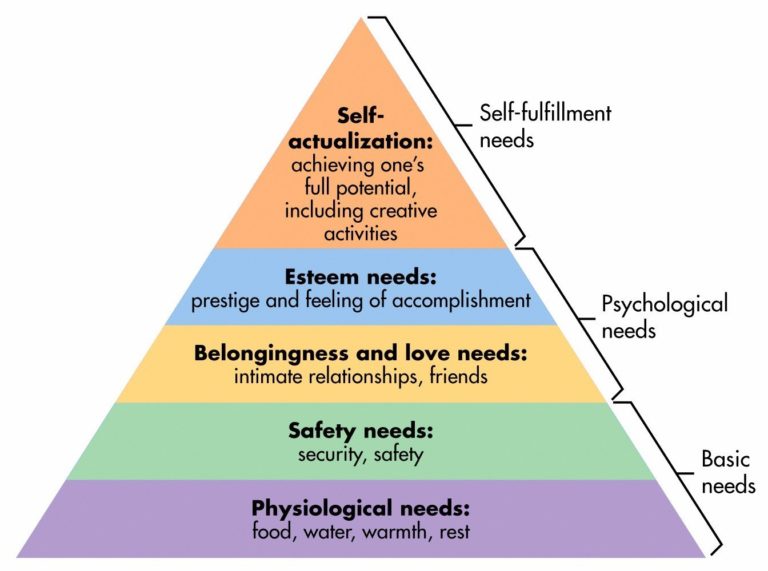15 Ways to Increase Employee Satisfaction

Employee satisfaction is the cornerstone to every successful organization with engaged employees. But what is employee satisfaction exactly and how can it be improved? Our article provides valuable insight into this field of employee engagement and offers you 15 simple measures that you can implement in your company.
Increasing employee satisfaction is a mammoth task, but one that definitely pays off. Industry giants such as Google, Apple, Facebook etc. succeed in retaining the best employees while other companies continuously have problems filling their vacancies with suitable candidates. Increasing employee satisfaction works wonders, especially in times like these, where the so called “war for talent” is raging and experienced workers remain a scarce resource.
We’ve identified 15 ways to increase employees’ satisfaction and motivation in your organization. Keep in mind that employee priorities have changed dramatically in recent years. Are you still meeting the demands and needs of a new generation?
Maslow’s pyramid of needs is a useful model for deriving effective measures to increase employee satisfaction. He categorizes into physiological needs, the need for safety, social needs, the need for esteem and the need for self actualization. Only when these basic needs are fulfilled, people can progress to further levels of satisfaction, i.e. employees can develop true engagement.
Maslow’s Hierarchy of Needs:
Employee Satisfaction – Physiological Needs
Physiological needs according to Maslow cover basic essentials such as food, housing, clothing, etc. In our case, these physiological needs cover everything that will keep your employees healthy. Healthy employees are more satisfied and effective. In order to maintain and promote the health of employees, there are a number of measures you can take.
1. Ergonomic Workplaces
A sound understanding of ergonomics can prevent most workplace injuries. Ergonomics describes a branch of occupational science in which working conditions are adapted to people. The aim is to reduce stress at work and at the same time to improve people’s performance. Here’s a list of ergonomic work equipment and postures that employees will appreciate:
Office chair checklist
- Adjustable height
- Adjustable armrests
- Adjustable backrest
- Movable seat
- Inclination of the seat possible
Desk Checklist
- Sufficient space for all working materials and their arrangement (at least 160 x 80 cm)
- Straight table edges
- Adjustable height (which also allows working in a standing position)
- Sufficient leg space
- Keyboard and screen are in front of each other
- Upper edge of the screen is at eye level
- Swivelling, flicker- free screen
- Adjustable display brightness
- Keyboard is close to the body
If you are unsure, whether your workplace fulfils these criteria, it always makes sense to ask an expert for training and tips.
2. Healthy Nutrition
It often gets hectic and stressful at work, which leads many people to pay too little attention to their eating habits; Fast food for lunch, a chocolate bar in between meetings, some people even forget to eat anything at all. A balanced and healthy diet can prevent a lot of health issues and reduce sickness rates. Employers can work towards this as well by providing free water, fruits and maybe one or the other team lunch from a good caterer (be sure that this caterer also includes a vegan option).
3. Correct Lighting
In addition to ergonomic working equipment, lighting plays a major role when it comes to shaping a workplace that everyone feels comfortable in. Bad lighting or lack of daylight can cause the employees to become unhappy and unmotivated very quickly. The willingness to perform well decreases, the frequency of errors increases and so does the risk of accidents.
A simple rule of thumb: the brighter the workplace and the more daylight seeps through, the happier the employees will be. The optimal lux value is set at 500 lux for employees with good vision and at around 750 – 1500 lux for visually impaired employees.
4. Sports Offers
In Germany, only about 30 percent of all employers include sports programs, relaxation offers or massages into their everyday work routine. This is too bad, because many statistics have shown that employees are very happy to take advantage of benefits such as these. These perks can range from sports courses at work to discounts and special offers at nearby fitness studios.
Employee Satisfaction – The Need for Safety
Employees need a secure workplace. This dimension does not focus so much on a physically safe workplace – which would fall under basic physiological needs – but rather on the need for job security.
5. Employment Contracts
Employment contracts are an essential part of employee satisfaction. Unlimited term employment contracts convey that the employment relationship is long-term and not limited by an event or time. This can reduce stress and anxiety of employees because it reduces risk and uncertainty. Maternity protection clauses and the contractual guarantee of parental leave also show the employees that they are valued.
6. Compensation
Salary naturally continues to play a decisive role in employee satisfaction. Paying fair wages that correspond to the qualifications of the employees is a key factor. A common misconception is that bonuses lead to higher motivation of individual employees, when in fact, performance-related remuneration often even tends to have the opposite effect. A fair wage accompanied by support and recognition from superiors and colleagues has proven much more motivating. Benefits such as company cars, phones or job tickets can’t hurt either.
7. Transparency and Feedback
Especially in large companies, daily work is often marked by great uncertainty. Employees do not know whether their superiors are satisfied with their performance and how they are perceived in general. Transparency can be improved through regular feedback meetings and 1-on-1s. Potential conflicts can often be prevented in this way. Nevertheless, conflict is sometimes inevitable. Should such a situation arise, it is important to approach it directly. An example would be to address conflicts between colleagues with a third party mediator.
8. Insurance
The right range of insurance policies plays a major role in employee satisfaction. More and more people are interested in a company pension plan. Direct insurance, accident insurance and supplementary health insurance are also of interest to employees. This relatively simple instrument of employee satisfaction is often underestimated and therefore used seldomly. Finding out what preferences employees have in this regard and providing them with a customized portfolio can be a game changer.
Employee Satisfaction – A Feeling of Belonging
Let’s face it, 40 hours a week (sometimes more) is a lot of time. It only makes sense that employees care about how well they get along with their colleagues and how they are perceived by them. A good rapport in the workplace should not only be facilitated, but also initiated by managers.
9. Listening
Often the solution to a problem can be found simply by listening attentively, not just as a colleague but as a person. What are the employees worried about? What are their fears and needs? What motivates them? What are their ambitions? Which tasks do they like to take on and what is particularly important to them? Taking the time to listen to private, or at least not exclusively business internal topics, can go a long way.
10. Team Building
It is no secret that a strong team bond increases the productivity of employees. Hence, managers should actively encourage and organize team building activities. Some ideas to encourage team building are company retreats, social areas in the office or optional leisure activities.
Employee Satisfaction – Esteem
Recognition, respect and appreciation for one’s work are key here. 1Show your employees that you see all the hard work they are putting in and appreciate their dedication. A lack of recognition usually leads to demotivation and therefore to a reduction of overall employee engagement.
11. Praise
The desire for recognition can be satisfied by direct and sincere praise. Praise is a form of spontaneous appreciation. Ideally, it is specific enough to let the person know why he or she receives it. Praise can be given to managers as well as to colleagues or customers. This form of appreciation is comparable to an occasional pat on the back. It conveys one’s own values and goals and thus indirectly reinforces a desired behaviour.
12. Rewards
Rewards for special achievements within companies can also satisfy the need for esteem. As described in point 6, however, an increase in satisfaction through bonuses is questionable. Developing a gratification system that rewards employees according to their annual performance review may reap better results. For example, reward employees with vouchers for visits to trade fairs, exhibitions, galleries, restaurants, cinemas or other events. Internal awards can also be be given, for example, to employees who have shown themselves to be particularly conscientious, orderly, friendly or helpful during the course of the year.
Employee Satisfaction – Self-Actualization
Self-actualization is the highest level in Maslow’s hierarchy of needs. Employees can develop during their career by seeking challenging activities and continuously expanding their skills and abilities. In the long run, these challenges lead to an increasing level of qualification, which in turn improves the possibility of career advancement. There are several ways to facilitate personal development for employees.
13. Upskilling
Most people are willing to become better at what they do for a living. Instrumentalizing this willingness can easily lead to a win-win situation for both parties. Qualified employees are very valuable. For many young and well-trained specialists, what opportunities for personal and professional development companies offer is decisive in the choice of an employer. Companies that want to assert themselves in the abovementioned “war for talent” must therefore offer, or at least support, further training measures for employees.
14. External Education Offers
External training courses are frequently used to motivate employees. Options can include:
External training courses at educational institutions or e-learning platforms such as Udemy, Lynda or Treehouse. Part-time studies at nearby universities Continuing education abroad, for example in the form of a language course or summer course at a corresponding university abroad Subsidizing educational opportunities
15. Feedback and Staff Appraisals
Ideally, staff appraisals take place regularly to provide feedback to employees and managers. They are important for employees and employers alike to align goals and drive development. By setting goals and agreeing on development opportunities, they can further their education and stringently expand their own career path. A positive assessment of performance based on the objectives achieved is also a good opportunity for employees to express a desire for promotion or salary adjustment. One-on-ones can thus open up motivating perspectives and pave the way for a future in the company for the employees.

